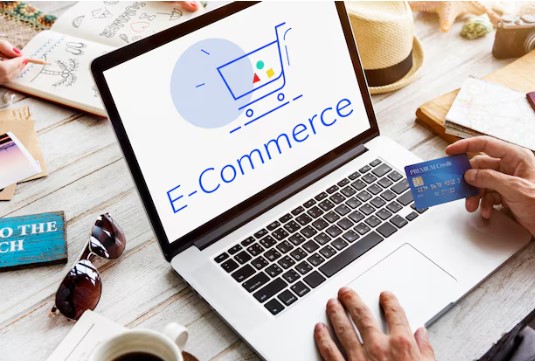Level Up Your E-commerce Stores: Top Growth Hacks
— March 18, 2015Launching an online store involves numerous challenges, but the right strategies can turn obstacles into opportunities. By employing innovative techniques to drive rapid growth, e-commerce businesses can thrive in a highly competitive market. Growth hacking focuses on using targeted, impactful methods to achieve substantial results.
Below is the definition of an e-commerce store and detailed and actionable growth hacks to help your e-commerce store expand its reach, increase conversions, and sustain long-term growth.
What Is An E-Commerce Store?
An e-commerce store is a digital platform that allows businesses to sell products or services directly to customers through the Internet. Unlike traditional physical stores, an e-commerce store operates entirely online, enabling businesses to reach a global audience without the constraints of geographic boundaries. Customers can browse product catalogs, explore detailed descriptions, view pricing, and make purchases from the comfort of their homes or on the go through mobile devices.
These platforms often include features such as user-friendly navigation, secure payment gateways, and real-time inventory updates. E-commerce stores streamline the shopping experience by offering convenience and accessibility, creating a dynamic marketplace where transactions happen in just a few clicks. From small businesses to global enterprises, e-commerce stores provide an efficient way to scale operations and engage customers in a highly competitive market.
The Importance Of Growth Hacks For E-Commerce Success
In a crowded and rapidly evolving online marketplace, simply launching an e-commerce store is not enough to ensure success. Competition is intense, and customers are constantly bombarded with options. Businesses must adopt strategic approaches to not only attract visitors but also convert them into loyal customers. This is where growth hacks prove invaluable.
Growth hacks are strategic marketing methods that focus on achieving rapid and measurable results using creative and resource-efficient techniques. These methods are particularly effective for e-commerce businesses because they address critical challenges such as driving traffic, increasing sales, and improving customer loyalty.
A well-executed growth hack can dramatically increase the visibility of an online store, boost conversion rates, and maximize revenue. For instance, by analyzing consumer behavior data, businesses can design targeted campaigns that appeal to specific demographics. This not only drives relevant traffic but also ensures that marketing budgets are used effectively.
In addition, growth hacks are adaptable, making them suitable for e-commerce businesses of all sizes, from startups to large-scale enterprises. By employing these strategies, businesses can optimize every aspect of their operations to achieve sustainable growth and establish a strong presence in the competitive e-commerce environment.
By employing these strategies, e-commerce stores can:
Increase website traffic
One of the primary objectives for any e-commerce store is to attract visitors. High website traffic is essential because it forms the foundation for potential sales. Growth hacks aimed at increasing traffic involve leveraging search engine optimization (SEO), social media marketing, and partnerships with influencers or complementary brands.
Search engine optimization is a powerful tool for driving organic traffic to an e-commerce store. By optimizing product pages with relevant keywords, crafting compelling meta descriptions, and ensuring fast website loading times, businesses can improve their rankings on search engines like Google. This increases visibility, drawing more potential customers to the site.
Social media platforms offer another opportunity to engage with audiences and drive traffic. Creating shareable content, running targeted ad campaigns, and collaborating with influencers can boost a store’s reach significantly. Influencers, in particular, bring credibility and a ready audience, allowing businesses to tap into new customer bases efficiently.
Additionally, e-commerce stores can explore collaborations with other brands to cross-promote products or services.
Boost conversions
Attracting visitors to an e-commerce store is only the first step; converting those visitors into paying customers is the ultimate goal. To achieve higher conversion rates, businesses must focus on providing a seamless and engaging shopping experience. Growth hacks tailored to this goal include optimizing the checkout process, offering personalized recommendations, and utilizing urgency tactics.
A well-designed checkout process can significantly impact conversion rates. Lengthy or complicated checkout procedures often lead to cart abandonment. Simplifying the process by offering guest checkout options, integrating multiple payment methods, and ensuring mobile responsiveness can improve the customer experience and encourage successful purchases.
Personalization plays a key role in enhancing conversions. By analyzing browsing and purchase data, businesses can deliver customized product recommendations that align with individual preferences. For example, a visitor searching for cameras could be shown related accessories such as tripods or protective cases. This approach not only boosts sales but also creates a more satisfying shopping experience.
Urgency tactics, such as limited-time discounts or low-stock alerts, can create a sense of urgency that motivates customers to complete their purchases quickly. Highlighting deals like “Last 2 items remaining!” or “Offer ends in 24 hours!” can drive impulsive buying behavior, increasing conversions effectively.
Enhance customer retention
Sustainable growth for e-commerce stores relies heavily on retaining existing customers. Customer retention is often more cost-effective than acquiring new ones, as loyal customers are likely to make repeat purchases and recommend the store to others. Growth hacks for retention focus on building trust, encouraging repeat interactions, and rewarding loyalty.
Building trust begins with providing excellent customer service and delivering on promises. Ensuring that products arrive on time and meet expectations builds credibility, increasing the likelihood of future purchases. Clear communication and prompt responses to queries or concerns further reinforce trust and loyalty.
Engaging with customers through email marketing and personalized content is another effective way to retain them. Sending tailored recommendations based on past purchases, exclusive discounts, or updates about new arrivals keeps the store top-of-mind for customers.
Implementing a loyalty program is a proven strategy to encourage repeat purchases. Rewarding customers with points, discounts, or freebies for frequent shopping creates a sense of appreciation and incentivizes long-term commitment. For instance, a loyalty program offering free shipping on orders above a certain amount can motivate customers to shop more often.
Improve brand awareness
Brand awareness is critical for attracting new customers and differentiating an e-commerce store from competitors. Growth hacks for increasing brand visibility include creating compelling content, leveraging user-generated content, and running targeted advertising campaigns.
Creating valuable and engaging content establishes the store as an authority in its niche. For example, a store specializing in fitness equipment could publish blogs or videos on workout tips and product reviews. This not only attracts traffic but also builds trust and credibility with the audience.
User-generated content, such as reviews, testimonials, and social media posts, can amplify brand visibility organically. Encouraging customers to share their experiences and tag the store on social media increases exposure and provides authentic endorsements that resonate with potential buyers.
Targeted advertising campaigns on platforms like Facebook, Google, and Instagram enable businesses to reach specific audiences based on demographics, interests, and online behavior. These campaigns are cost-effective and can drive significant traffic to the store, ultimately enhancing brand recognition.
Optimize marketing spend
E-commerce stores often operate with limited resources, making it essential to maximize the return on investment (ROI) from marketing efforts. Growth hacks designed to optimize marketing spend focus on data-driven decision-making, automation, and cost-effective strategies.
Analyzing customer data allows businesses to identify which channels, campaigns, and products yield the highest returns. This insight enables them to allocate budgets more effectively, focusing on strategies that deliver the best results.
Automation tools can streamline repetitive marketing tasks, such as email campaigns, social media posts, and customer follow-ups. This not only saves time but also ensures consistent engagement with the audience.
Cost-effective strategies, such as referral programs and affiliate marketing, can generate high returns without requiring significant upfront investment. Encouraging existing customers to refer friends by offering discounts or incentives is an efficient way to attract new buyers while retaining loyal ones.
In the following sections, we’ll explore five effective growth hacks that can help your e-commerce store achieve these goals.
Top Effective Growth Hacks for E-Commerce Stores
Optimize Site Speed for Higher Conversions
Site speed plays a crucial role in e-commerce success. Research shows that users expect pages to load within two seconds, and delays beyond this timeframe often lead to visitors abandoning the site. High bounce rates caused by slow loading times directly impact conversion rates and customer satisfaction. Studies indicate that reducing load time to under two seconds can boost conversion rates by 15–20% annually, contributing to higher revenues. Beyond improving customer experience, faster websites tend to rank higher on search engines like Google, driving more organic traffic to your store.
To optimize your site’s speed, consider using image compression tools to reduce the file sizes of product images. Large images often slow down page loading, so ensuring optimal resolution with minimal file size is essential. Implementing browser caching can also improve load times for returning users by allowing their browsers to save static elements of your site. Additionally, selecting a reliable hosting provider is critical for managing increased traffic efficiently, especially during promotional campaigns or seasonal sales. A fast, responsive website not only retains visitors but also builds credibility and enhances the shopping experience.
Create a Clear, Compelling Landing Page
The landing page serves as the first point of contact for many visitors, making it a key factor in shaping their perception of your brand. A well-designed landing page should be simple, focused, and visually appealing, highlighting your product’s main benefits. Effective landing pages eliminate distractions and emphasize a single, clear call to action (CTA), guiding users toward desired actions like signing up or making a purchase.
A great example is GiftRocket, which uses a straightforward tagline and a prominent CTA on its landing page. By including customer testimonials, media mentions, and concise product descriptions, the page builds trust and encourages engagement. To replicate this success, ensure your landing page features the main value proposition prominently, displayed in a large, readable font near the top. Use visuals strategically to communicate product benefits and avoid overwhelming visitors with too much information. Incorporating trust signals such as reviews or client logos further enhances credibility, making your landing page a powerful tool for conversions.
Leverage Email Signups for Repeat Engagement
Email marketing remains one of the most effective channels for e-commerce engagement. Building an email list allows you to maintain a direct line of communication with potential and existing customers. Placing email signup forms on high-traffic pages increases the chances of capturing visitor information. Offering incentives like discounts or exclusive content encourages users to subscribe, creating opportunities for future engagement and purchases.
H&M, for example, incentivizes new subscribers by offering a discount, driving both signups and initial purchases. Once users join your email list, sending targeted campaigns such as cart abandonment reminders, product recommendations, and sale alerts keeps your brand top of mind. To maximize the impact of email marketing, consider using exit-intent popups to capture visitors who are about to leave your site. Personalized abandoned cart emails with special offers can effectively convert hesitant shoppers, turning lost opportunities into revenue. These strategies not only drive sales but also strengthen customer relationships, fostering long-term loyalty.
Display Social Proof to Build Trust
Social proof is a powerful motivator in e-commerce. When potential customers see positive feedback from others, they are more likely to trust your brand and make a purchase. This can take the form of product reviews, ratings, testimonials, or even follower counts on social media. Displaying this information prominently reassures shoppers of your store’s reliability and encourages them to buy with confidence.
An effective example is Fab.com, which integrates product ratings and customer reviews directly into its product pages. This transparency builds trust by allowing shoppers to see feedback from real users. Similarly, Inkefx.com uses social media plugins to display follower counts, emphasizing its popularity and credibility. To leverage social proof effectively, include customer reviews and ratings on your product pages. Featuring press mentions or endorsements from influencers adds another layer of credibility, particularly for new visitors. By showcasing these elements, you demonstrate your brand’s reliability and encourage potential buyers to complete their purchases.
Develop Engaging Content to Attract Your Target Audience
Content marketing is an essential tool for driving traffic and building engagement in e-commerce. By creating valuable and relevant content, you can capture the interest of your target audience and encourage them to interact with your brand. This can include blog posts, videos, or social media content tailored to the platforms your customers frequent. When done effectively, content marketing not only boosts organic reach but also positions your brand as an authority in your niche.
Dollar Shave Club provides an excellent example of engaging content. Their humorous videos resonate with their target audience, generating significant shares and increasing brand awareness. To implement a similar approach, create content that speaks to your customers’ interests and challenges. Share useful tips, entertaining stories, or behind-the-scenes insights rather than focusing solely on promotions. Optimizing your content for search engines (SEO) ensures it reaches a wider audience, driving more traffic to your store. Engaging, shareable content not only attracts new customers but also strengthens relationships with existing ones, fueling sustainable growth.
Conclusion
Growth hacking offers e-commerce businesses an opportunity to achieve significant results by focusing on targeted, innovative strategies. By prioritizing site speed, crafting compelling landing pages, leveraging email marketing, displaying social proof, and creating engaging content, your store can attract new customers and retain existing ones effectively. These strategies, when implemented thoughtfully and tailored to your audience, pave the way for sustained growth in a competitive market.
By continuously testing, analyzing, and refining your approach, you can identify the strategies that deliver the best results for your store, ensuring long-term success in the fast-paced e-commerce landscape.









